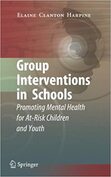 Forthcoming book, available soon on Amazon.
Forthcoming book, available soon on Amazon.
Unfortunately, when I looked for guidelines, I only found general suggestions. Some were good, such as this one from Potsdam State University of New York. Be honest, flexible, patient, and a good listener. Good ideas but not enough.
I searched for more.
Derry Koralek and Ray Collins give advice on how to set up a tutoring program and interview potential tutors. A good list of ideas, but still, how can the actual tutor know how to develop a quality program?
I kept searching.
James Larson provided a bit more content on exactly how to structure a tutoring session—from the tutor’s point-of -view. I particularly liked his statement:
“Adapt your teaching method to the student’s learning method.”
Yet still, I’m not sure a tutor could develop a “quality” tutoring program just on Larson’s advice. Therefore, we need to develop guidelines that will help us create quality tutoring programs.
In response to my earlier definition of tutoring, I have had requests for such guidelines. Therefore, I have compiled Five Keys to Successful Tutoring. As always, I am referring to reading tutoring. Yes, we need tutoring in math and other subjects, but my work and research are exclusively in reading.
I welcome your responses.
__________
For more about my earlier definition, reread: Will Tutoring Correct the Learning Losses Caused by COVID? Part 1
__________
Five Keys to Successful Tutoring
1. Focus on the student: Tutoring is not about educational trends or test scores. Tutoring is about the student. Before you can help a student improve, you must understand what the student needs to learn in order to improve. You cannot just sit down and start teaching. You must learn as much as possible about the student you are working with. What does this student need to be successful in the classroom? What has caused this student to fail to learn and why? The “why” is very important. Then, establish tutoring goals based on the student’s needs. I taught a 15-year-old, who had failed for 9 years, to read. The school said that the student would never be able to learn to read. I was successful because I first tried to understand exactly what the student did and did not know about letter sounds. Then, I used vowel clustering and taught the student to read. Tutoring can be very successful, but you must look at the individual needs of each student. There is no such thing as “one size fits all” in tutoring. What works with one student, may not work with another student. You must individualize your instruction to fit the needs of each individual student.
2. Select a teaching curriculum that fits the student's specific needs. Do not just use the curriculum everyone else is using. Select your tutoring curriculum carefully. I have used vowel clustering for the past 23 years in my work with all ages. I have worked in both inner city and rural locations. I have worked with students diagnosed with dyslexia, ADHD, Aspergers, autism, and an array of cognitive processing problems. Vowel clustering allows me to adjust my tutoring lessons to the specific needs of each student. This is very important. Oftentimes, we expect students to adjust to the curriculum. Instead, we should be selecting a curriculum that will adjust to the needs of the student. I worked with a young student one year who had been held back in kindergarten. My first thought was, how can you fail kindergarten? Unfortunately, the student was unable to memorize the required number of words to be promoted to first grade. With vowel clustering, there is no memorization. By the end of the year, the student was reading above his age level. In my new book, shown at the top of the page, I give several examples showing how I adapted vowel clustering to meet the needs of each individual student.
3. Create a positive learning environment—even online. A positive learning environment is more than just pretty pictures or motivating quotes. A positive learning environment is how you teach. A positive learning environment includes the words you speak, how you talk with your student. Notice, I did not say how you talk “to” your student. There is a difference. Many students do not know how to communicate and interact with others, especially with a tutor. Unfortunately, the same can be said of many adults. Communication is more than just talking and listening. Communication means trying to understand how and why a person feels as they do. A positive learning environment must include good communication. A positive learning environment also includes the way you teach. Intrinsic motivation is better than extrinsic. Intrinsic is driven by an internal desire to learn. You want to tap into this internal desire to learn, to improve, to start over. Offering a candy bar is extrinsic and can be classified as a bribe. Extrinsic motivation backfires eventually. It may seem to work at first, but it soon fades, and you are left with failure. “Do it or else” demands do not work either. Strive for intrinsic motivators. I use hands-on learning techniques.
 For more on the problems of using extrinsic motivators, read: Chapter 3, Motivation: Intrinsic vs. Extrinsic in Group Interventions in Schools: Promoting Mental Health for At-Risk Children and Youth. I even include a hands-on project that works perfect in a tutoring situation in this chapter.
For more on the problems of using extrinsic motivators, read: Chapter 3, Motivation: Intrinsic vs. Extrinsic in Group Interventions in Schools: Promoting Mental Health for At-Risk Children and Youth. I even include a hands-on project that works perfect in a tutoring situation in this chapter. 5. Measure improvement. You cannot tell whether your tutoring program is successful or not unless you test the student’s improvement. Therefore, you must use some form of measurement before you start tutoring so that you can tell exactly where your student is at the beginning of your work time together. You must then retest periodically to make sure that your student is in fact improving. Do not conduct a four-month tutoring program and only test at the beginning and the end of that four month period. You will have absolutely no idea whether your tutoring techniques are working or not. You must review and retest often. Check at the end of each session to make sure that your student understood what you were teaching on that day. Don't hand out a pop quiz; instead, review and have the student explain the concept to you. If you are striving for a quality tutoring program, you must make sure that the student you are tutoring is actually learning the material that you are teaching.
Yes, we really can create quality tutoring programs that will help students overcome any and all learning losses from COVID and before. But in order to do so, we must focus on the student, be flexible with our teaching methods, and create a positive learning environment. I use vowel clustering and hands-on learning techniques to help me create successful tutoring sessions that enable students to rise above failure and find success. My forthcoming tutoring book, listed at the top of the page, will use each of these principles to help you the tutor be successful.
 RSS Feed
RSS Feed
